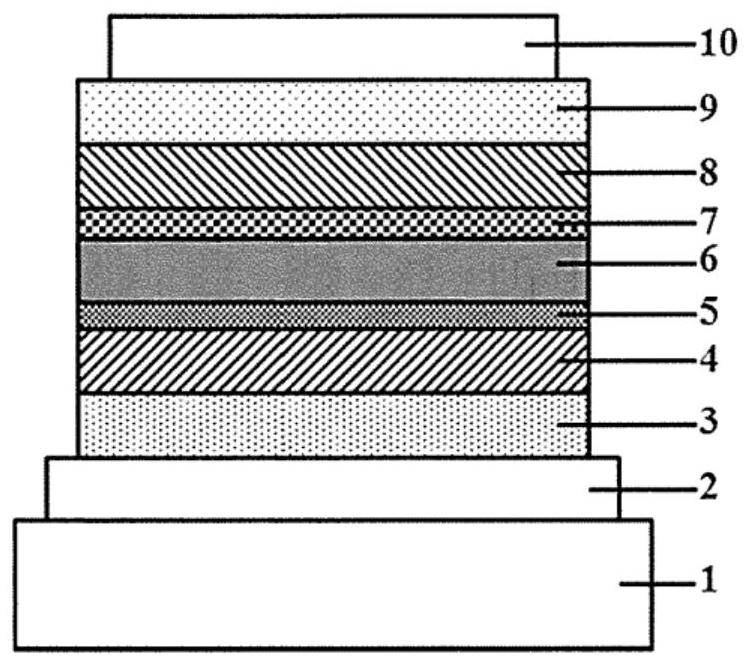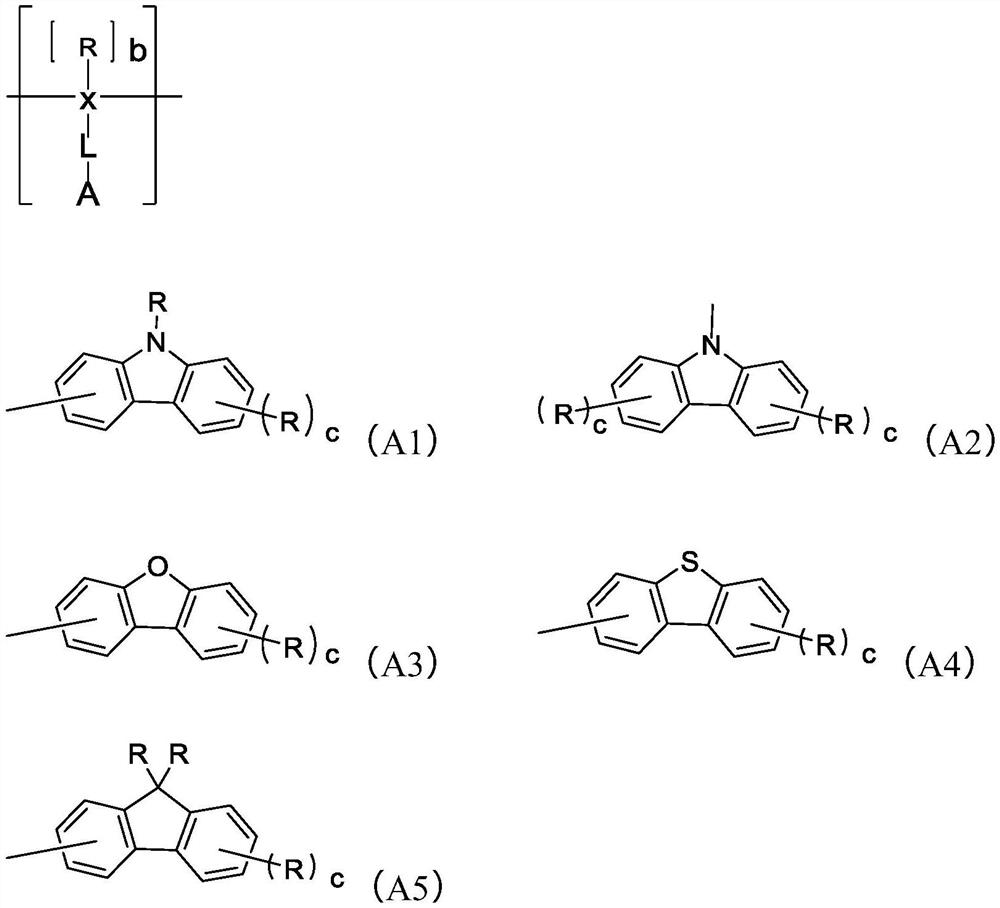Material for organic electroluminescence element, and organic electroluminescence element
An electroluminescent element and electroluminescent technology, applied in the directions of luminescent materials, electrical components, electro-solid devices, etc., can solve the problems of insufficient component efficiency and durability characteristics, and achieve high charge transfer characteristics, high driving stability, high performance effects
- Summary
- Abstract
- Description
- Claims
- Application Information
AI Technical Summary
Problems solved by technology
Method used
Image
Examples
Embodiment
[0145] Hereinafter, the present invention will be described in more detail using examples, but the present invention is not limited to these examples, and can be implemented in various forms as long as the gist thereof is not exceeded.
[0146] Molecular weight and molecular weight distribution determination of polymers
[0147] The molecular weight and molecular weight distribution of the synthesized polymer were measured using GPC (manufactured by Tosoh, HLC-8120GPC), solvent: tetrahydrofuran (THF), flow rate: 1.0 ml / min, column temperature: 40°C. The molecular weight of the polymer was calculated as a polystyrene-equivalent molecular weight using a calibration curve based on monodisperse polystyrene.
[0148] Solubility Evaluation of Polymers
[0149] The solubility of the synthesized polymer was evaluated by the following method. It was mixed with toluene so as to have a concentration of 0.5 wt%, and subjected to ultrasonic treatment at room temperature for 30 minutes. ...
Synthetic example 1
[0152] Polymer A is synthesized via Intermediate A, Polymerization Intermediates A, B.
[0153] (Synthesis of Intermediate A)
[0154]
[0155] Under nitrogen atmosphere, add carbazole 5.02g (30.0mmol), 3,5-dibromoiodobenzene 14.12g (39.0mmol), copper iodide 0.17g (0.9mmol), tripotassium phosphate 31.86g (150.1mmol), reverse Formula-1,2-cyclohexanediamine 1.37g (12.0mmol), 1,4-two 50ml of alkane was stirred. Then, it heated to 120 degreeC, and stirred for 24 hours. After cooling the reaction solution to room temperature, inorganic substances were filtered off. The filtrate was dried under reduced pressure, and purified by column chromatography to obtain 8.51 g (21.2 mmol, yield 70.7%) of Intermediate A as a pale yellow powder.
[0156] (Synthesis of Polymer A)
[0157]
[0158] Step 1) Add 2.0g (5.0mmol) of intermediate A, 1.65g (5.0mmol) of 1,3-benzenediboronic acid bispinacol ester, 0.17g (0.15mmol) of palladium tetrakistriphenylphosphine, 3.45 g (24.9 mmol) of ...
Synthetic example 2
[0162] Polymer B was synthesized via intermediates B, C, D, E and polymerization intermediates C, D.
[0163] (Synthesis of Intermediate B)
[0164]
[0165] Add 5.00 g (20.0 mmol) of 2,6-dibromotoluene, 12.19 g (48.0 mmol) of diboron bis pinacol ester, and [1,1'-bis(diphenylphosphino)ferrocene under a nitrogen atmosphere. ] Palladium (II) dichloride dichloromethane adduct 0.98g (1.2mmol), potassium acetate 11.78g (120.0mmol), di 100ml of alkane was stirred. Then, it heated to 130 degreeC, and stirred for 6 hours. The reaction solution was cooled to room temperature, and after adding water and stirring, the organic layer was recovered. Magnesium sulfate and activated carbon were added and stirred, and the solid matter was filtered out. The solvent was distilled off under reduced pressure, and the filtrate was concentrated, followed by recrystallization from hexane to obtain 4.78 g (13.9 mmol, yield 69.4%) of Intermediate B as a light brown powder.
[0166] (Synthesis ...
PUM
| Property | Measurement | Unit |
|---|---|---|
| thickness | aaaaa | aaaaa |
| thickness | aaaaa | aaaaa |
Abstract
Description
Claims
Application Information
 Login to View More
Login to View More - R&D
- Intellectual Property
- Life Sciences
- Materials
- Tech Scout
- Unparalleled Data Quality
- Higher Quality Content
- 60% Fewer Hallucinations
Browse by: Latest US Patents, China's latest patents, Technical Efficacy Thesaurus, Application Domain, Technology Topic, Popular Technical Reports.
© 2025 PatSnap. All rights reserved.Legal|Privacy policy|Modern Slavery Act Transparency Statement|Sitemap|About US| Contact US: help@patsnap.com



